|
"Never Has A Man So Embodied The Spirit Of The Age".
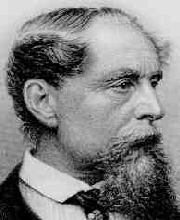
In speaking the above words, the British author, Peter Ackroyd, perfectly sums up everything that Charles Dickens was and is. Charles Dickens was born in Landport, Hampshire.His father was a clerk in the navy pay office, who was well paid but
often ended in financial troubles. In 1814 Dickens moved to London, and then to Chatham, where he received some education.
He worked in a blacking factory, Hungerford Market, London, while his family was in Marshalsea debtor's prison in 1824 - later
this period found its way to the novel Little Dorrit (1855-57). In 1824-27 Dickens studied at Wellington House Academy, London,
and at Mr. Dawson's school in 1827. From 1827 to 1828 he was a law office clerk, and then worked as a shorthand reporter at
Doctor's Commons. He wrote for True Son (1830-32), Mirror of Parliament (1832-34) and the Morning Chronicle (1834-36). He
was in the 1830s a contributor to Monthly Magazine, and The Evening Chronicle and edited Bentley's Miscellany. In the 1840s
Dickens founded Master Humphrey's Cloak and edited the London Daily News.
These years as a journalist left Dickens
with lasting affection for journalism and suspicious attitude towards unjust laws. His sharp ear for conversation helped him
reveal characters through their own words. Dickens's career as a writer of fiction started in 1833 when his short stories
and essays to appeared in periodical. His SKETCHES BY BOZ and THE PICKWICK PAPERS were published in 1836; he married in the
same year the daughter of his friend George Hogarth, Catherine Hogart. However, some people suspected that he was more fond
of her sister, Mary, who moved into their house and died in 1837. Dickens requested that he be buried next to her when he
died and wore Mary's ring all his life. Another of Catherine's sisters, Georgiana, moved in with the Dickenses, and the novelist
fell in love with her. Dickens had with Catherine 10 children but they were separated in 1858. Dickens also had a long liaison
with the actress Ellen Ternan, whom he had met by the late 1850s.
The Pickwick Papers were stories about a group of
rather odd individuals and their travels to Ipswich, Rochester, Bath and elsewhere. Dickens's novels first appeared in monthly
instalments, including OLIVER TWIST (1837-39), which depicts the London underworld and hard years of the foundling Oliver
Twist, NICHOLAS NICKELBY (1838-39), a tale of young Nickleby's struggles to seek his fortune, and OLD CURIOSITY SHOP (1840-41).
Among his later works are DAVID COPPERFIELD (1849-50), where Dickens used his own personal experiences of work in a factory,
BLEAK HOUSE (1852-53), A TALE OF TWO CITIES (1859), set in the years of the French Revolution. GREAT EXPECTATIONS (1860-61),
the story of Pip (Philip Pirrip), was among Tolstoy's and Dostoyevsky's favorite novels. The unfinished mystery novel THE
MYSTERY OF EDWIN DROOD was published in 1870.
From the 1840s Dickens spent much time travelling and campaigning against
many of the social evils of his time. In addition he gave talks and reading, wrote pamphlets, plays, and letters. In the 1850s
Dickens was founding editor of Household World and its successor All the Year Round (1859-70). In 1844-45 he lived in Italy,
Switzerland and Paris. He gave lecturing tours in Britain and the United States in 1858-68. From 1860 Dickens lived at Gadshill
Place, near Rochester, Kent. He died at Gadshill on June 9, 1870.
Although Dickens's career as a novelist received
much attention, he produced hundreds of essays and edited and rewrote hundreds of others submitted to the various periodicals
he edited. Dickens distinquished himself as an essayis in 1834 under the pseudonym Boz. 'A Visit to Newgate' (1836) reflects
his own memories of visiting his own family in the Marshalea Prison. In 'A Small Star in in the East' reveals the working
conditions on mills and 'Mr. Barlow' (1869) draws a portrait of a unsensitive tutor.
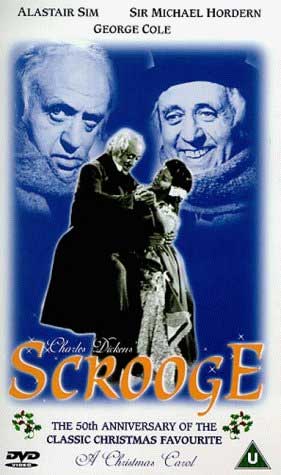
Scrooge:
You dont believe in letting the grass grow under your feet, do you?
Undertaker: Ours is a highly
competitive profession, sir.
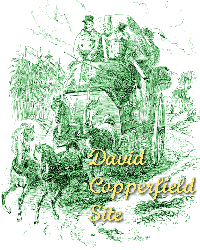
|
 |
|
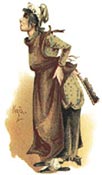
|
| The Marchioness |
the voice you hear:
reading from:
About Dickens
Dedicated to bring the genius
of Dickens to a whole new generation
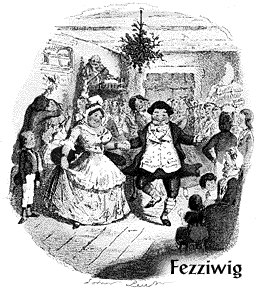
|
 |
 |
 |
|
|
 |
 |
 |
|
|
|

